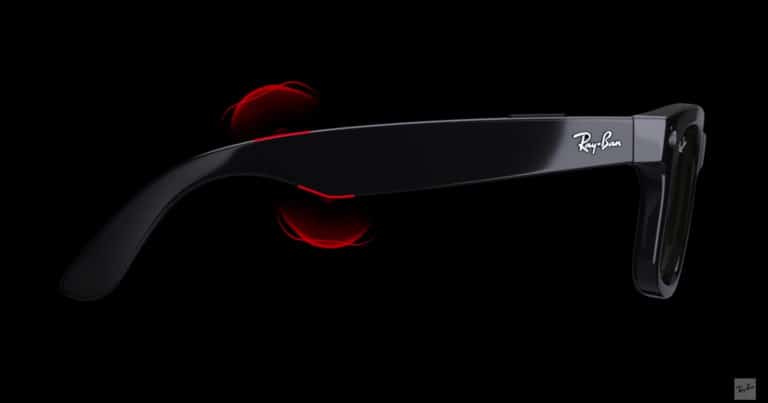
As you may have heard, Facebook and Ray-Ban announced their long-awaited smart glasses. The key distinction is “smart glasses” versus “AR” as there is no optical system that projects visuals. However there are foundations for audio AR experiences (more on that in a bit).
This aligns somewhat with our pre-launch thinking around Facebook’s lite AR approach, but Facebook went even “lighter” than we anticipated. We mean that literally in terms of device weight and bulk; but also figuratively, as the actual on-device AR is light to non-existent.
But that’s the tradeoff for achieving the device’s intended targets: style and wearability. Among smart glasses to date — Spectacles, Bose Frames, etc. — Stories are the closest to real sunglasses. And they’re aided in that accomplishment by the iconic Wayfarers format.
Much of this has been broken down in videos over the past 24 hours, which we’ve assembled for this week’s XR Talks. The collection includes reviews, as well as Facebook’s own launch video for the device which signals some of its thinking and AR long-game approach.
Understated Goal
Starting with Facebook’s long game for AR glasses, Ray-Ban Stories’ primary but understated goal is to acclimate the world to faceworn tech through a device that’s actually wearable. That way, when “full AR” arrives, it won’t require as much uphill consumer education (see Google Glass).
“We believe that this is an important step on the road to developing the ultimate augmented reality glasses,” said Zuckerberg in the launch video. “There’s a lot of technology that still needs to be developed and miniaturized to deliver the AR glasses that we all envision for the future.”
Speaking of understated, there are a few less-trumpeted aspects of Ray-Ban Stories that likewise step towards AR. Specifically, the audio features that let users listen to music and receive phone calls give the device the foundations for audio AR experiences a la Bose Frames.
And though any AR happening on Ray-Ban Stories is mostly audible, the device isn’t totally devoid of visual AR. Like Snap Spectacles’ third generation, pictures and stereoscopic video captured through the device can be augmented later in SparkAR. So AR is there, though roundabout.
Planting Seeds
Otherwise, notable aspects of Ray-Ban Stories include their potential use cases. They include any media capture that gains value by being hands-free. As usual, prime use cases will organically develop over time, but early examples include DJs, sports, gaming and live events.
It’s also notable that Facebook wasn’t overbearing with its branding, as it’s arguably done in other hardware such as Oculus Quest 2. It’s taken the advice to “read the room” regarding the privacy stigma it carries. After all, this is a device that has a somewhat-inconspicuous camera.
We’ll see if that brand stigma mitigates Ray-Ban Stories’ adoption. Either way, the device won’t be a mass-market phenomenon….as Snap Spectacles have demonstrated. And that’s okay as hardware revenue isn’t the goal. Facebook is rather planting seeds for its stake in AR’s future.
“Ray-Ban Stories are an important step toward a future when phones are no longer a central part of our lives,” Zuckerberg said during the launch video, “and you won’t have to choose between interacting with a device or interacting with the world around you.”
We’ll pause there and cue the full launch video (above) and third-party reviews (below)…






